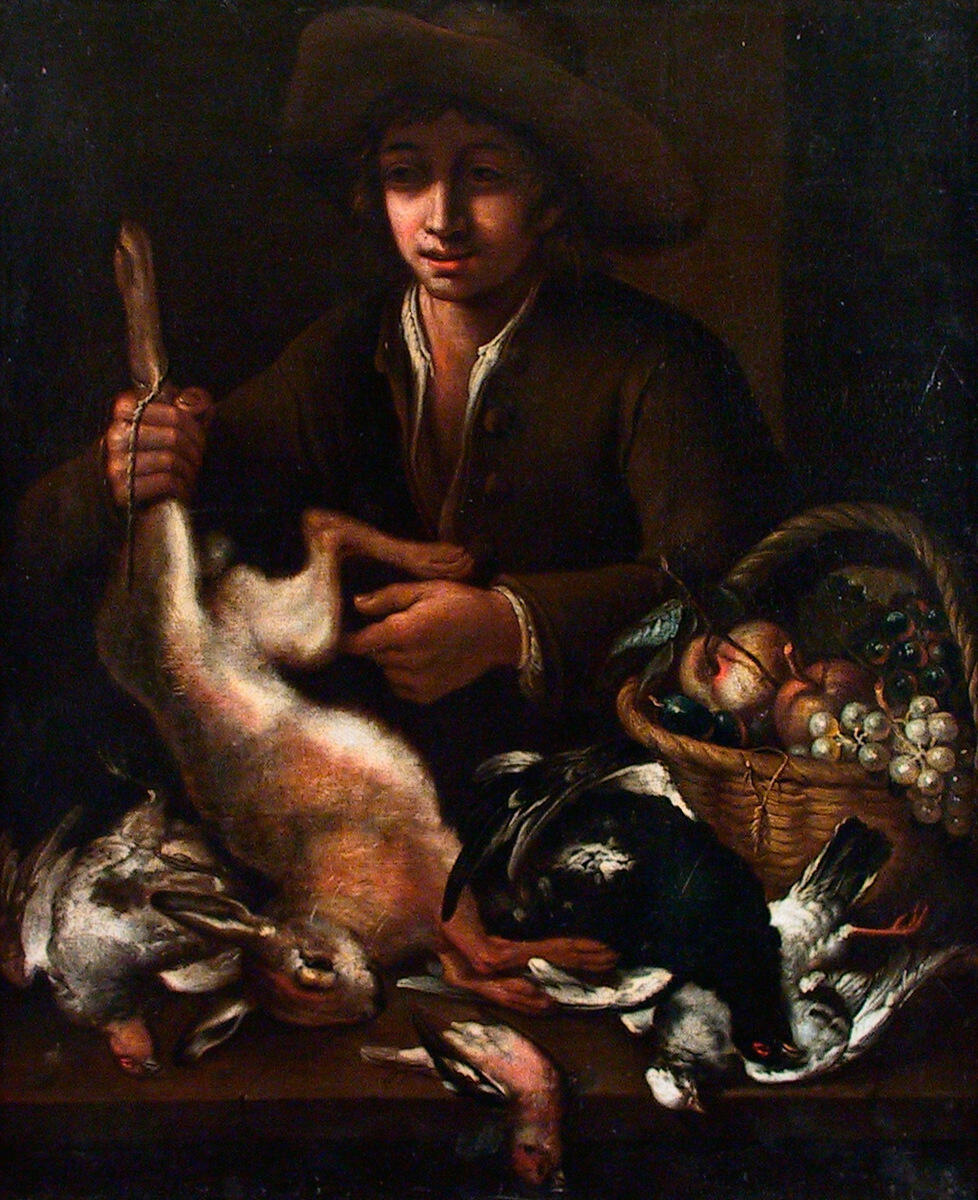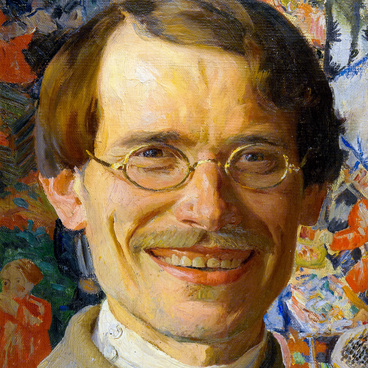The development of Dutch art in the second half of the 17th century led to the emergence of new themes reflecting to the demands of the time. It is primarily manifested in the new topics of the still life genre. Along with the continuing development of “breakfasts paintings”, the artists began depicting flowers — “bouquets”, which became very popular in late Dutch painting. At the same time, a new type of still lifes appeared — trompe-l’œil paintings, in which the artists employed sophisticated and illusionistic techniques to render various objects. In addition, another specific genre was formed, depicting various kinds of reptiles and insects. Finally, a still life with dead game became also quite widespread.
The origin and rapid growth of this genre is associated with a change in the tastes of Dutch society. Representatives of different strata of Holland became interested in a new fashionable occupation — hunting small and large game, hares, grouse, swans, and pheasants.
The peculiar beauty of dead game began to entice and delight many artists. Jan Weenix was one of the most prominent masters who worked in the “trophies of hunting” genre. He was the son of the painter Jan Baptist Weenix. Weenix Junior was born in Amsterdam, but lived in Utrecht for the first part of his life. At first, Jan painted Italian views in the style of his father, then he fell in love with still lifes. In 1675, the artist and his family moved to Amsterdam, where he achieved great success. In addition to still lifes, he created landscapes, genre paintings, portraits and lithographs, and was often commissioned to design private estates.
The Kaluga Museum of Fine Arts houses a still life by Weenix — “A Young Man with Game”. The painting depicts a counter with hunting trophies and a basket of fruit. A young salesman in a wide-brimmed hat holds a hare carcass in one hand, pointing at it with the other hand, as if offering it to an invisible buyer. The artist’s ability to combine different elements in one composition — a human figure, fruits and dead game — is amazing. In his paintings, the master often depicted dead hares, interpreting this topic in various ways. The carcasses of dead birds lying on the table are in the foreground. The soft outlines of their bodies with heads hanging down determine the overall character of the composition. On this excellent canvas, the objects seem tangible and material. At the same time, Weenix perfectly captures the finest coloring of the bodies of the hare and birds: the soft fluffy wool, the light down of birds, and the hard feathers.
The origin and rapid growth of this genre is associated with a change in the tastes of Dutch society. Representatives of different strata of Holland became interested in a new fashionable occupation — hunting small and large game, hares, grouse, swans, and pheasants.
The peculiar beauty of dead game began to entice and delight many artists. Jan Weenix was one of the most prominent masters who worked in the “trophies of hunting” genre. He was the son of the painter Jan Baptist Weenix. Weenix Junior was born in Amsterdam, but lived in Utrecht for the first part of his life. At first, Jan painted Italian views in the style of his father, then he fell in love with still lifes. In 1675, the artist and his family moved to Amsterdam, where he achieved great success. In addition to still lifes, he created landscapes, genre paintings, portraits and lithographs, and was often commissioned to design private estates.
The Kaluga Museum of Fine Arts houses a still life by Weenix — “A Young Man with Game”. The painting depicts a counter with hunting trophies and a basket of fruit. A young salesman in a wide-brimmed hat holds a hare carcass in one hand, pointing at it with the other hand, as if offering it to an invisible buyer. The artist’s ability to combine different elements in one composition — a human figure, fruits and dead game — is amazing. In his paintings, the master often depicted dead hares, interpreting this topic in various ways. The carcasses of dead birds lying on the table are in the foreground. The soft outlines of their bodies with heads hanging down determine the overall character of the composition. On this excellent canvas, the objects seem tangible and material. At the same time, Weenix perfectly captures the finest coloring of the bodies of the hare and birds: the soft fluffy wool, the light down of birds, and the hard feathers.



